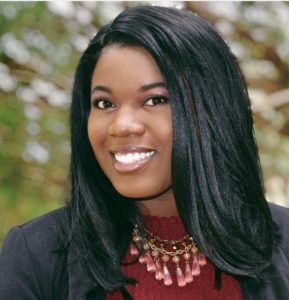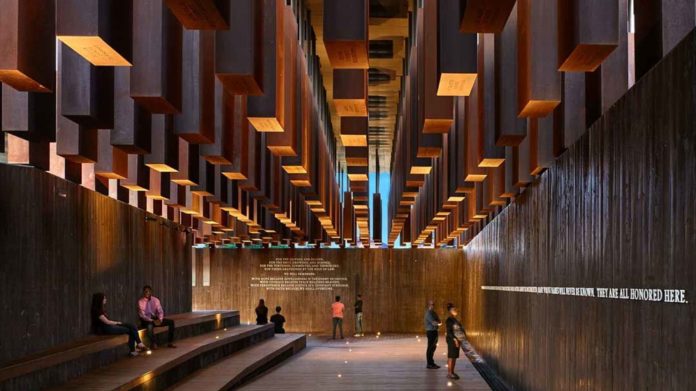
I can assume many things about you from your name though I’ve never met you. I can imagine the life you must have led or the family that you came from. I can form a picture of what you may have looked like. Perhaps your eyes were brown, maybe a shade darker than mine. Maybe your hair was straight, curly and thick like mine. Maybe you were tall like my daddy or as strong as my momma. Were you a child? Man or a woman? Did you have a family? What were your aspirations? Your name leaves me speculating about you. I couldn’t see your face. I couldn’t hear your voice, but your story is being told.
America has done very little in acknowledging the damage created from its long history of injustice against people of color. In the last century, there have been decades of segregation, racial terror, and lynching. It has only been a little over fifty years since black people in this country were given the right to vote and attend public schools. Conversations on lynching and its legacy had taken a backseat, until now. There are effects of this horrific history lingering today, but the conversation is emerging, just down the road in the Heart of Dixie.
On February 27, 2019, Mercer University’s McAfee School of Theology took a trip to Montgomery, Alabama where we visited The National Memorial for Peace and Justice and The Legacy Museum: From Enslavement to Mass Incarceration. Current students, alum, faculty, and friends of McAfee gathered together to embrace and reflect upon the dark and heavy struggle of the African American people in this country. This narrative is told by many and often, but to touch, to see, and to come face to face with the injustices that have shaped much of this country shed new light on our calling as carriers of the Gospel of Christ. During our visit, there were tears shed by onlookers, experiences exchanged, and a thread of hope that bound us together.
Our first stop, The National Memorial for Peace and Justice. Upon entering the memorial, there is a powerful sculpture depicting enslaved African men and women. Ghanaian artist Kwame Akoto-Bamfo dedicates the work to the memory of the victims of the trans-Atlantic slave trade. The strength represented in these sculptures are impeccable. Confronted by this visual, many conversations stop or resolve in silent whispers. The ambience of the remainder of the memorial carries that solitude with every word that is read. The memorial continues over six acres of land that contain the names of over 4000 lynching victims engraved on columns representing each county in the United States where racial terror lynchings took place. Those columns of names transitioned to plaques of stories untold. These stories were not crowded together, rather each had its own place to be processed, looked upon, and embraced. Here are just a few:
Three brothers with the surname Sylvester were lynched in Proctor, West Virginia, in 1886 after they were accused of theft.
Fred Rochelle, 16, was burned alive in a public spectacle lynching before thousands in Polk County, Florida, in 1901.
David Walker, his wife, and their four children were lynched in Hickman, Kentucky, in 1908 after Mr. Walker was accused of using inappropriate language with a white woman.
Jesse Thornton was lynched in Luverne, Alabama, in 1940 for addressing a white police officer without the title “mister.”
Dozens of black sugar cane workers were lynched in Thibodaux, Louisiana, in 1887 for striking to protest low wages.
These are just a few of the stories told. There are 90 in all at the memorial which are based on archival accounts dating from 1877 to 1950. These horrendous stories seem to take the air from your lungs as they are read one by one. There is no place like this. There is no other recognition of this history acknowledged or accepted. There are no efforts to commemorate the lives of the individuals and families affected then and now by these events. Unfortunately, that is the point being made at the memorial. It has become a lighthouse that remembers such a dark history in a remarkable light of hope.
Our next stop, The Legacy Museum: From Enslavement to Mass Incarceration. The museum is 11,000 sq. ft and is built on the site of a former warehouse where enslaved black people were imprisoned. It is located midway between a historic slave market and the main river dock and train station where tens of thousands of enslaved people were trafficked during the height of the domestic slave trade (Equal Justice Initiative). This interactive museum highlights the narrative of the domestic slave trade, racial terrorism, Jim Crow South, and the world’s largest prison system. People spread throughout the museum exploring the reality of many marginalized, voiceless people. There were tears, there were questions, and there were conversations about what was heard and seen. One student shared an experience of overhearing another visitor in the museum asking, “What was the point of it all?” Questions like these show the necessity for memorials and museums such as this one.
The experience of this trip has beckoned us all to respond with courage in light of what our eyes had seen, what our ears had heard, what our hands had touched, and what our hearts had felt. It left us with unanswered questions and many unprocessed thoughts. We don’t have all of the names, but we have some. We don’t have all of the answers, but we have found some truth. We have moved your truths from our heads to our hearts, asking the age old question, what does the Lord require of us today?










